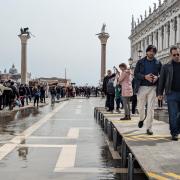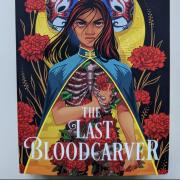
Chocolate eggs, Commercialism and Easter bunny are words associated with Easter nowadays but it wasn’t always like this. Many people know about the Easter weekend, when Jesus was crucified on Good Friday and resurrected on the Easter Sunday. This was the initial reason for celebration to account for Christ being reborn. However this isn’t the reason we go gallivanting after Easter eggs every year. There is a much more rooted tradition that has shaped things into what we know today.
Easter weekend was originally as Jewish celebration to do with Passover (an ancient ritual). For Christians It stated that Easter it had to be two days following the weekend, does Easter Wednesday sound right to you? This was changed in 325 AD, by Roman Emperor Constantine to Sunday as Christ had risen that day. Easter Sunday is traditionally the first Sunday after the spring equinox and can lie between 26th March and 25th April under the full moon. The original way to celebrate Easter is to light the Paschal candle to represent the light out of darkness just like Jesus’s resurrection.
As Christianity spread across Europe, cultures blended with pagan customs. For example the word Easter derives from the pagan Goddess of Spring, Eostre. It’s believed that the goddess consorted with a Hare to create the origin of the Easter bunny. In contrast to this many people don’t believe in this ancient theory and thought the Rabbit was chosen because its sign of fertility and new life associated to spring time where there are lots of births.
Eggs have become a major part of Easter due to Lent. In this period eggs were strictly forbidden, so when it was over it was part of huge feast associated with Easter Sunday. The egg has strong imagery related to Christ for those who worshipped him, the yolk represented the light coming out of the darkness, and the egg shells was also painted red to represent his death at the beginning of the weekend. Eggs became even more special, during the 19th century in Russia as high class men of aristocracy gave their wives jewel encrusted eggs (Fabergé) to show their affections. This could indicate where the idea of giving eggs as a gift was from, but not to do with chocolate. It also became a long tradition that if a child behaved well on the eve before Easter Sunday the Easter bunny would deliver some eggs. This encouraged children to create nests for them. It wasn’t till 19th century chocolatiers helped fill up baskets with egged shaped chocolate to help aid the large tradition. This has become famous around the world, with America selling around 90 million eggs every year. It’s astonishing to think how Easter had such humble beginnings, from lighting the Paschal candle to giving chocolate eggs to one another. It could make you think; what will Easter be like in the next millennium?



























